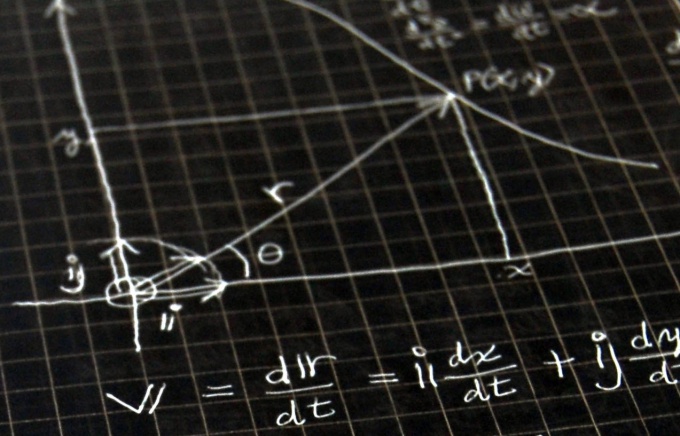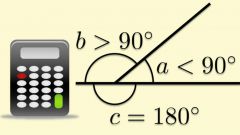Instruction
1
Let on the plane contains two nonzero vectors, delayed from one point: the vector A with coordinates (x1, y1) and vector B with coordinates (x2, y2). The angle between them is designated as θ. To find the degree measure of the angle θ it is necessary to use the definition of the scalar product.
2
Scalar product of two nonzero vectors is a number equal to the product of the lengths of these vectors on a cosine of the angle between them, i.e. (A,B)=|A|*|B|*cos(θ). Now we need to Express from this record is the cosine of the angle: cos(θ)=(A,B)/(|A|*|B|).
3
The scalar product can also be found by the formula (A,B)=x1*x2+y1*y2, i.e. the scalar product of two nonzero vectors is equal to the sum of the products of the corresponding coordinates of those vectors. If the scalar product of nonzero vectors is zero, the vectors are perpendicular (the angle between them is 90 degrees) and further computation can produce. If the scalar product of two vectors is positive, then the angle between these vectors is acute, and if negative, the angle is obtuse.
4
Now calculate the lengths of vectors A and B by the formulas: |A|=√(x12+y12), |B|=√(x22+y22). The length of the vector is calculated as the square root of the sum of the squares of its coordinates.
5
The values of the scalar product and lengths of vectors substitute in obtained in step 2 the formula for finding the cosine of the angle, that is cos(θ)=(x1*x2+y1*y2)/(√(x12+y12)+√(x22+y22)). Now that we know the cosine ratio to find the degree measure of the angle between the vectors need to use the table Bradis or take from this expression the arc cosine is: θ=arccos(cos(θ)).
6
If the vectors A and B given in three-dimensional space have coordinates (x1, y1, z1) and (x2, y2, z2), respectively, when the cosine angle is another coordinate. In this case, the cosine of the angle is: cos(θ)=(x1*x2+y1*y2+z1*z2)/(√(x12+y12+z12)+√(x22+y22+z22)).
Useful advice
If the two vectors are not deferred from one point, to find the angle between a parallel transfer need to combine the start of these vectors.
The angle between the two vectors cannot be greater than 180 degrees.
The angle between the two vectors cannot be greater than 180 degrees.





